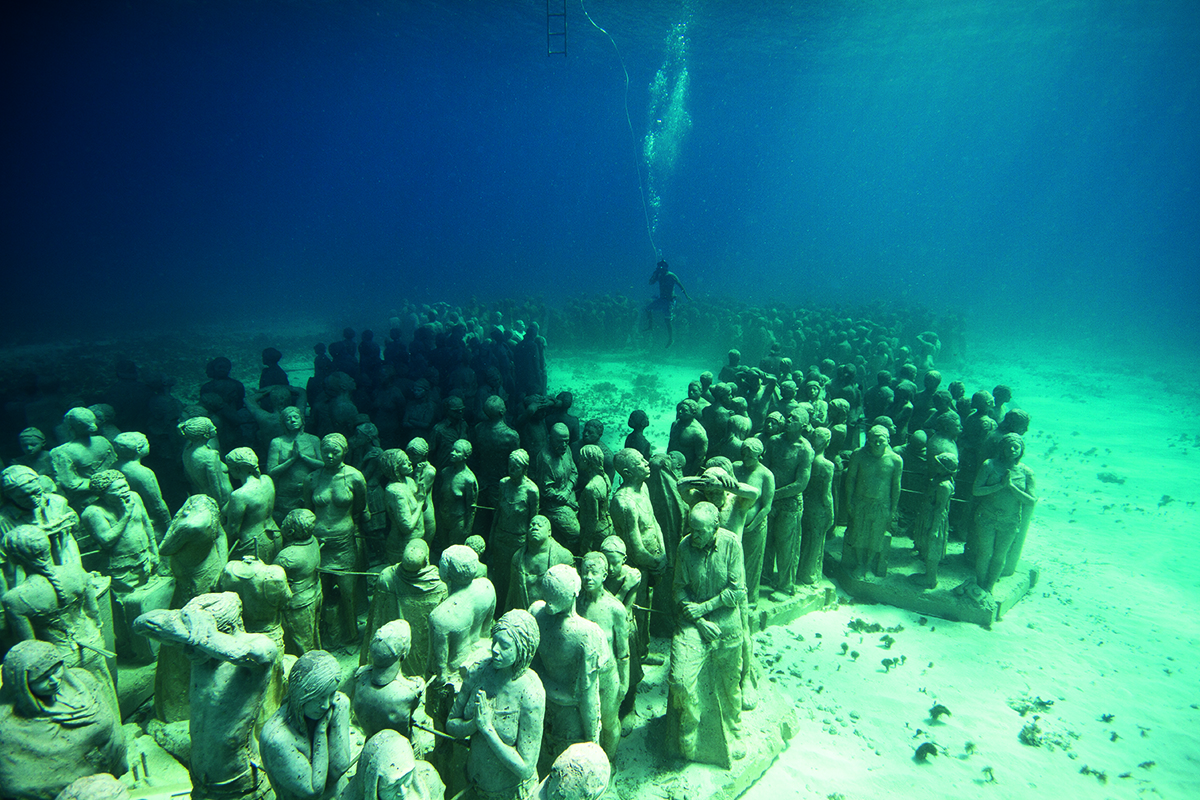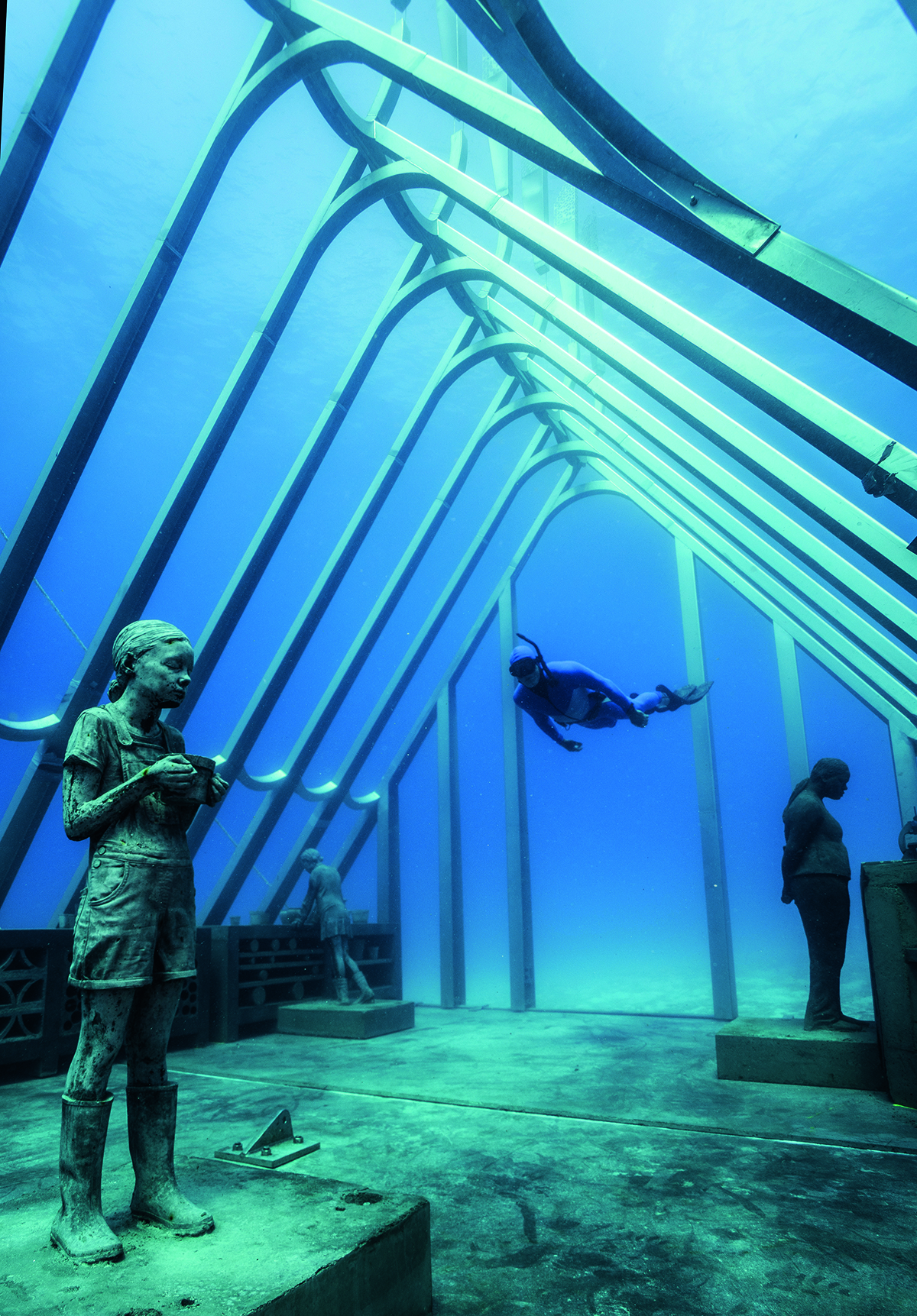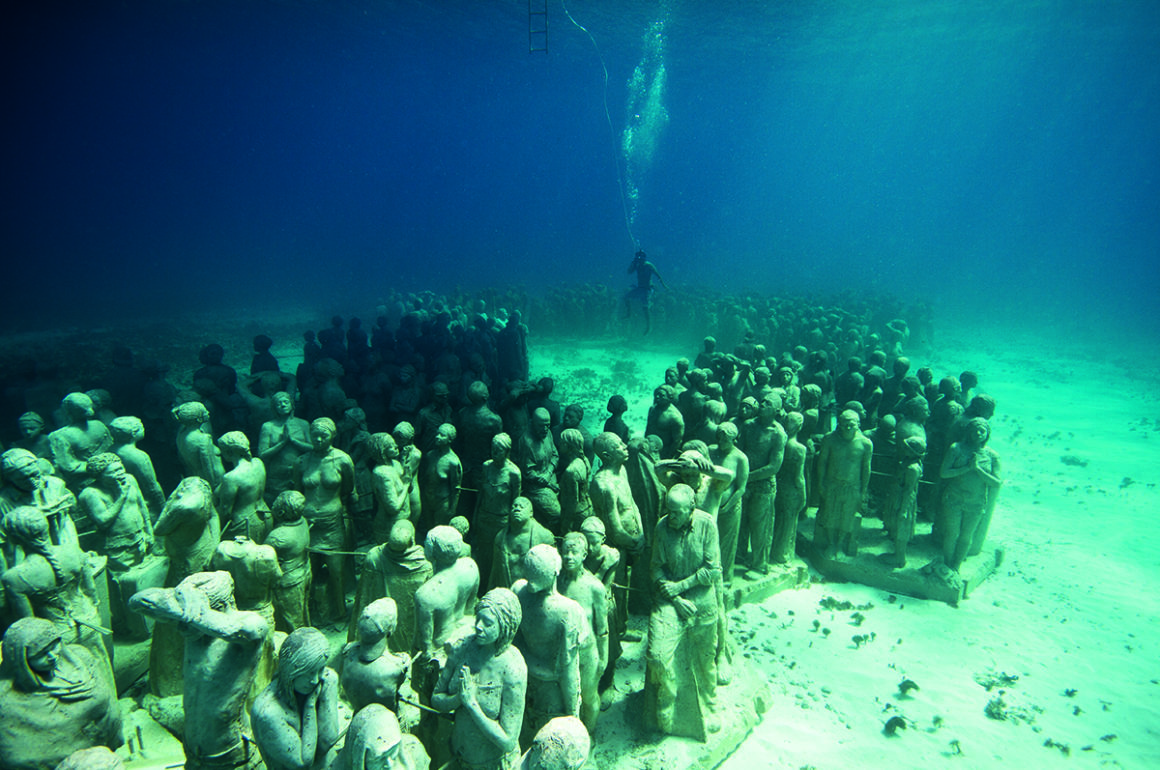
The Silent Evolution (2009) by Jason deCaires Taylor, at Cancún Marine Park, Mexico.
Artist, diver and marine conservationist Jason deCaires Taylor creates mesmerising underwater art that draws divers away from delicate coral ecosystems and helps scientists study the effects of pollution. He speaks to LUX about his new project near the Great Barrier Reef

Jason deCaires Taylor
LUX: How do you ensure the materials you use don’t cause harm to the environment?
Jason deCaires Taylor: I’ve been researching materials now for around 14 years with artificial reef companies and universities and marine biologists to find the best metal for the job that doesn’t degrade and that is pH neutral, doesn’t leach any toxins into the environment and encourages marine life to grow.
Follow LUX on Instagram: luxthemagazine
LUX: How does your work contribute to the ocean environment?
Jason deCaires Taylor: On a basic level my sculptures become artificial reefs designed to encourage marine life and create a habitat. We also use the sculptures to control tourism, as a way of drawing tourists away from fragile coral reefs so their impact can be minimised. Part of the process is changing the laws about how the sea is used in that area and to create marine protected areas. Also, most of the pieces have an environmental message behind them about themes such as global warming or ocean pollution.
LUX: How did you progress from being a diver to being a sculptor, marine conservationist and photographer?
Jason deCaires Taylor: It was a kind of a slow evolution. I studied to be a sculptor first. After that, I wanted to explore the world a little bit and so I became a diving instructor. I then decided that it would be ideal if I could try to combine my two interests and it just kind of evolved from there.
LUX: Your Molinere Bay Underwater Sculpture Park in Grenada has been listed as one of National Geographic’s top 25 wonders of the world. How did this come about?
Jason deCaires Taylor: That was my first project. I was living in Grenada teaching and diving and a hurricane that passed through decimated one of the bays and damaged all the coral. There was only one bay left pristine and so all the tourists were heading there and having a big impact on it. So, we needed to draw people away and that’s when I started producing artworks. I didn’t have a firm plan for it, I just thought I’d experiment for a year and see what happens. It became extremely popular and led on to bigger works.
Read more: How Gaggenau is innovating the ancient art of steam cooking
LUX: Tell me about the work you do with conservation organisations.
Jason deCaires Taylor: I have worked with the World Wide Fund for Nature and with Greenpeace on campaigns about ocean plastics and other issues. I have found the fact that the sculptures are dramatic and unusual means they’re good at generating publicity, so I’m able to smuggle in other stories as it’s not so easy to talk about some of these things.
LUX: You’ve started working with Gaggenau?
Jason deCaires Taylor: It’s quite a new relationship. They have a strong connection to the arts and often support artists. They contacted me a few months ago about working together and that was how the exhibition of work by myself and others alongside their designs came about.

The Coral Greenhouse (2020), Great Barrier Reef, Australia
LUX: You have a major ongoing project in the Great Barrier Reef. Can you tell us anything about that?
Jason deCaires Taylor: We have completed the first two stages, one of which is a piece called Ocean Siren. This work actually changes colour according to what the temperature of the reef is. It’s positioned just off the coast of Queensland, above water this time, standing on the water. It’s linked to a weather station on the reef and the figure, which is based on a local indigenous girl, changes colour as the reef changes and as the risk of coral bleaching becomes higher. The idea is that she issues a warning to an urban environment or to a coastal community about what’s happening to the reef. The other stage is a large underwater building called The Coral Greenhouse. We’ve been working with a group of marine biologists at probably one of the biggest marine science universities in the world, at James Cook University in Queensland, and also with the Australian Institute of Marine Science. We’re using this new building as a kind of underwater laboratory/art installation and we’re going to be planting thousands of different types of coral in this greenhouse and installing monitoring devices to see what the dissolved oxygen count is, to help keep tabs on what’s happening on the Great Barrier Reef.
LUX: It sounds like you do a lot of scientific research into these projects yourself. Do you have a scientific background or do you learn with each project?
Jason deCaires Taylor: I haven’t got any science education behind me. I’ve worked in so many places around the world and it’s impossible to be an expert in all of these different sites, so I work closely with local biologists. I also trained as an underwater naturalist when I was doing my diving course. I think I’ve learned what I do know by being underwater for so much of my life.
View Jason deCaires Taylor’s portfolio: underwatersculpture.com
Interview by Emma Marnell
This article was originally published in the Summer 2020 Issue, out now.






Recent Comments